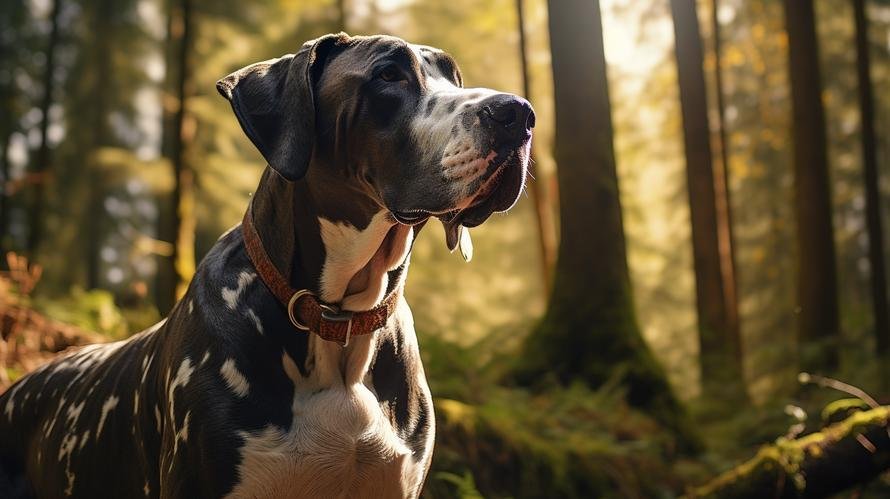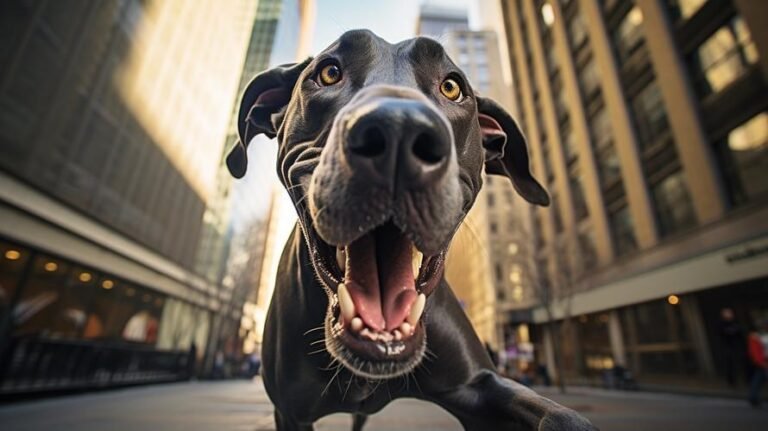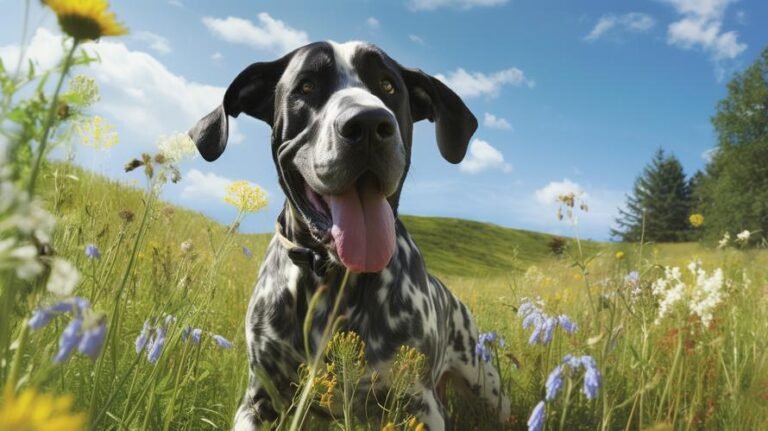Since the beginning of time, dogs have held a special place in our hearts and homes as cherished pets. They come in all shapes and sizes, each breed with its unique characteristics. Today, let’s dive into the fascinating world of one such large, endearing creature: the Great Dane.
A mighty stature with a lanky, athletic build perfectly defines a Great Dane. Often referred to as “Gentle Giants,” they are adored for their friendly and calm demeanor. But here is a startling fact – Great Danes, with their imposing size, can grow up to 32 inches tall and weigh about 175 pounds. They are larger than most people! Such unexpected size often raises a question – Is a Great Dane aggressive?
To objectively answer this question, first, it’s essential to understand that aggression isn’t a breed-specific trait, but a behavioral characteristic that could surface in any breed under certain circumstances. Great Danes, like any other dogs, can portray aggressive behavior under stress or if improperly trained. However, by nature, Great Danes are not an aggressive breed.
Here’s a surprising nugget of wisdom. Did you know that despite their towering size, Great Danes are essentially giant lap dogs? They boast an affectionate, kind, and gentle demeanor that makes them perfect family pets. Their calmness extends to other pets and strangers, making them a delightful company rather than a threat. Such understanding, patience, and magnanimity makes them a breed apart.
But, don’t let the gentle demeanor of the Great Dane mislead you into thinking it is a docile creature that doesn’t need regular physical activities. Highly energetic, it requires regular exercise to preserve its health and happiness, and lack thereof could lead to agitation. Yet, a well-exercised and well-fed Great Dane is invariably a happy and friendly pet.
Everyone perceives aggression differently. A playful bite or growl from a dog might be cute when exhibited by a Chihuahua, but the same action can seem intimidating when done by a dog as large as a Great Dane. Therefore, many confuse their strong physical presence with aggression.
For a practical understanding, let’s dig deeper into the common aggressive behaviors seen in dogs. These include growling, biting, bared teeth, rigid body, and pinned back ears. Does your Great Dane show these signs often? If yes, then it’s not necessarily aggression. It could also be a result of stress, fear, insecurity, or discomfort and it would be best to get professional advice to understand the root cause better.
Here’s the catch-22 situation – due to their large size, if Great Danes become aggressive, they can undoubtedly pose a significant threat. This highlights the importance of responsible pet ownership. It is essential to instill proper behavior, socialize them well, and address any signs of aggression early. Implement positive reinforcement training to promote good behavior. Kindness, consistency, and patience are key elements in training Great Danes.
Caring for any pet comes with a sizeable share of responsibility, and it notches higher with larger breeds like the Great Dane. When you bring one into your family, remember everyone needs to be on board with the decision and understand the responsibilities it entails. Regular visits to the vet, healthy diet, exercise, training, and proper socialization will ensure you have a happy and well-behaved gentle giant.
In conclusion, Great Danes, with their friendly and amicable nature, are undoubtedly a joy to have as pets. However, like any dog, they require positive training and socialization to grow into their best selves. While their sheer size may present them as aggressive, remember that they are but gentle giants who love to lounge with their humans. If properly cared for, a Great Dane indeed proves the old saying true – “The bigger the dog, the bigger its heart.”



